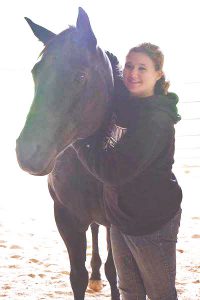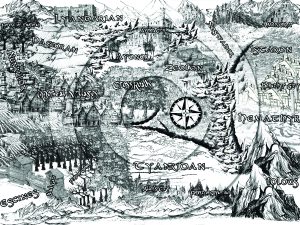
Editor’s Note: As the author of four fantasy novels, Ashley Brown, a Communications Academy senior, has had multiple friends and relatives approach her and ask how she manages to create a fantasy world. Summing it up isn’t an easy thing to do, she said, and the response can come across as a very intimidating and overwhelming process. To those who have that desire to create a world of fantasy, Brown encourages do not give up. She, along with all fantasy authors, struggled throughout the writing journey. There were times she contemplated giving up and throwing it away.
“Let me tell you this, continuing was the best decision I’ve made,” Brown said.
The list below is meant to help those stuck or intimidated by fantasy creation. Brown has kept advice to the point, and she hopes it helps simplify the process and gives writers that drive to create a world of their own.
By Ashley Brown, Entertainment editor
1. Establish the Realms.
Realm creation; the most timely but creative aspect of creating Fantasy.
It’s recommended that, when creating the different Realms, a separate outline is created. Keep track of the details of the countries. What’s the climate? What countries border it? Is it in the North, South, East, West, etc? Is it clean and tidy or littered with mass graves? What type of resources are available? Is the Realm nothing more than a field with a forest or does it house a Kingdom?
2. Establish the Races
A world isn’t a world without some sort of life form.
Once the Realms have been created, it’s time to give those countries a Race. There are many factors that should be kept in mind when creating separate Races. What kind of beliefs do they have? Are they malevolent or benevolent? What type of food do they eat? Do they have any special powers or abilities? Are they ruled by a King and Queen, or just a King? Just a Queen?
Get the basics established (a separate outline may be required – it’s suggested one is created), and memorized. Writing the actual novel will be easier with all of the fine details shaped and finalized.

3. Give the world and its people a past
DO NOT create the world’s history while writing the novel. Don’t do it!
Make sure to establish the world’s past before diving into plot creation. If the writer/creator understands the world and its people to the fullest, telling the story itself will be easier. Don’t be afraid to get creative; give the world and the people residing in the countries a history. Not only will the writer be able to connect better, but the reader will as well.
Of course there’s an exception here; this may be the start of the world and the first generation of the people. It’s still recommended that planning is done ahead of time – the entire novel should be outlined (you did outline that novel of yours right?) – so it’s not being blindly rushed in to.
4. Establish the plot and subplots
Plot creation. It’s the only thing that’s going to bring that world to life. Things are happening in the real world; things should be happening in this fantasy world. What are the main struggles? What goals do your protagonists have? What are your antagonists going to do to stop said heroes?
Like the previous steps and/or suggestions, an outline – chapter by chapter works the best – needs to be shaped. Without this outline, the novel will be all over the place and [you as] the writer will mix up the main ideas and go off track. This will throw the reader off.
Know the plot. Like [you] know the world and the races. Only once the plot [and subplots] are completed and [you’re] satisfied with the outcome, proceed to the last step and remember do not stray from the outline / outlines.
5. Put it together.
Now that [you’ve] established the Realms, a map of said Realms and world, the Races and [you’ve] finalized [your] plot and subplots, it’s time to put it together. This is the last of the stages of creation as it’s the best part of it and should come easily. Keep [your] outlines open – take a deep breath and write.
